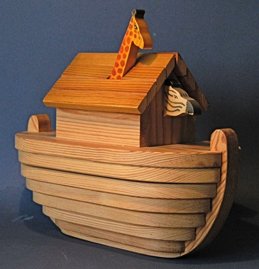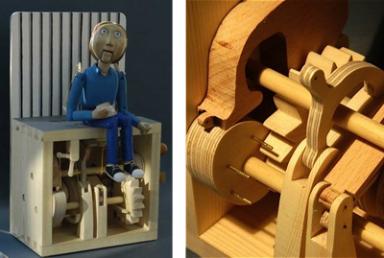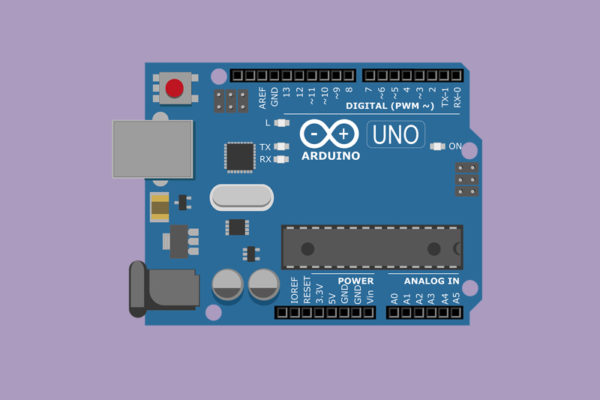
For those of you new to automata, these are mechanical toys or sculptures that, when cranked or motorised, re-enact movements through a system of mechanical processes, such as cranks, cams and gears. The results are often beautifully presented and can be quite beguiling, such as this one from Philip Lowndes, Quiet Contemplation of a Sandwich (check out the videos here).

Some makers are already using Ponoko to create working mechanisms, and the laser cutting process seems quite appropriate for making most of the elements of automata, which have to be precisely crafted, often from wooden board. What’s more, there are a host of resources for the budding automata builder on the web.
The Make blog led me the Cabaret Mechanical Theatre‘s modular automata kit – a collection of wooden pieces that can easily be put together to form your own automata, while learning about the mechanical principles most commonly used in the devices. The Cabaret Mechanical Theatre once had premises in London’s Covent Garden, which are sadly no more, but the group continues an online presence, selling kits, books and exhibiting online the work of automata makers such as Paul Spooner, Carlos Zapata and Tim Hunkin, whom I have previously blogged about.
The first stop for automata info must be the Automata and Automaton Blog, Dug North’s very well updated chronicle of automata on the web. He offers some great resources for those of you interested in new mechanisms and often link to the Sands Museum, an online museum of industrially produced mechanisms, catalogued in some detail. Check out Philip Lowndes’ Anatomy of an Automaton for some insight into his craft.
There’s a good line in plans for automata from cardboard too, including these at the Cabaret Mechanical Theatre shop and these at Flying pig.

Incidentally, a puzzle just calling out to be laser cut is Lowndes’ Noah’s Ark, the plans for which can be bought here.
Beware: automata can be addictive!
Images by Philip Lowndes


